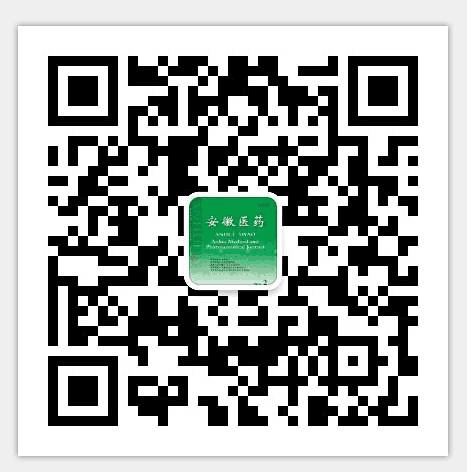| 刘波,周智恩,苏松川,等.补肾壮骨汤联合阿仑膦酸钠对绝经后骨质疏松病人外周血微 RNA及骨密度的调节作用研究[J].安徽医药,2025,29(6):1256-1260. |
| 补肾壮骨汤联合阿仑膦酸钠对绝经后骨质疏松病人外周血微 RNA及骨密度的调节作用研究 |
| Regulatory effect of Bushenzhuanggu decoction combined with alendronate on peripheral blood microRNA and bone mineral density in postmenopausal osteoporosis |
| |
| DOI:10.3969/j.issn.1009-6469.2025.06.040 |
| 中文关键词: 骨质疏松,绝经后 补肾壮骨汤 阿仑膦酸钠 微 RNA 骨密度 血清学 |
| 英文关键词: Osteoporosis, postmenopausal Bushenzhuanggu decoction Alendronate sodium MicroRNA Bone mineral density Serological markers |
| 基金项目:成都中医药大学“杏林学者”学科人才科研提升计划项目( YYZX2022046) |
|
| 摘要点击次数: 59 |
| 全文下载次数: 16 |
| 中文摘要: |
| 目的探讨补肾壮骨汤联合阿仑膦酸钠对绝经后骨质疏松(PMOP)病人外周血微 RNA(miR)和骨密度的调节作用。方法采用临床随机单盲对照试验,将成都市中西医结合医院 2021年 9月至 2022年 9月收治的 168例 PMOP病人按随机数字表法分为对照组、试验组,各为 84例。对照组给予常规治疗 +阿仑膦酸钠片,试验组则联合补肾壮骨汤治疗,均治疗 12周。比较两组治疗 12周后的疗效,治疗前及治疗 12周后的评分指标、外周血 miR、骨密度、血清学指标,治疗期间的安全性。结果两组治疗 12周后的总疗效相比,试验组高于对照组[ 89.29%(75/84)比 76.19%(64/84)P<0.05];两组中医证候、视觉模拟评分法(VAS)、汉密尔顿焦虑量表( HAMA)评分及血清骨谷氨酰基蛋白( BGP)、 Ⅰ型胶原羧基,端肽 β特殊序列( β-CTX)、总Ⅰ型前胶原氨基端延长肽(tP1NP)水平治疗 12周后相比治疗前降低,试验组低于对照组(均 P<0.05);外周血 miR-21、miR-335-5p水平及股骨颈骨、大转子骨密度治疗 12周后相比治疗前升高,试验组各指标分别为 1.15±0.09、8.03±0.97、(0.83±0.12)g/cm2(0.71±0.06)g/cm2,1.22±0.56、、(均 P<0.05)。两组病人在治疗期不良间的、高于对照组的 0.75±0.24、(0.64±0.06)g/cm2(0.53±0.09)g/cm2反应发生率比较,差异无统计学意义( P>0.05)。结论与阿仑膦酸钠单独治疗比较,补肾壮骨汤联合阿仑膦酸钠应用于 PMOP病人可有效调节外周血 miR和骨密度,改善中医证候、疼痛程度、焦虑症状及骨代谢,进而有利于提升疗效。 |
| 英文摘要: |
| Objective To investigate the regulatory effects of Bushenzhuanggu decoction combined with alendronate on peripheralblood microRNA (miRNA) and bone mineral density (BMD) in patients with postmenopausal osteoporosis (PMOP).Methods In this randomized single-blind controlled trial, 168 PMOP patients treated at Chengdu Integrated Traditional Chinese and Western MedicineHospital (September 2021-September 2022) were allocated to control (n=84) and trial (n=84) groups via random number table method.The control group received conventional treatment plus alendronate sodium tablets, while the trial group received additional Bushen. zhuanggu decoction, with both groups treated for 12 weeks. The efficacy after 12 weeks of treatment, the scoring indexes, peripheralblood miRNA, bone density, serological indexes before and after 12 weeks of treatment, and safety during treatment were compared be-tween the two groups.Results The total efficacy rate of the trial group after 12 weeks of treatment was higher than that of the control group [89.29% (75/84) vs. 76.19% (64/84), P<0.05]. The scores of TCM syndromes, visual analog scale (VAS), Hamilton Anxiety Scale (HAMA), and levels of serum bone Gla-protein (BGP), β-cross-linked C-telopeptide of type I collagen (β-CTX), and total procollagen type I N-terminal propeptide (tP1NP) were lower after 12 weeks of treatment compared with those before treatment, and the trial groupshowed lower values than the control group (all P<0.05). The levels of peripheral blood miR-21, miR-335-5p, and BMD of the femoralneck and greater trochanter were higher after 12 weeks of treatment compared with those before treatment; in the trial group, these val-ues were 1.15±0.09, 8.03±0.97, (0.83±0.12) g/cm2, and (0.71±0.06) g/cm2, respectively, which were higher than those in the controlgroup [0.75±0.24, 1.22±0.56, (0.64±0.06) g/cm2, and (0.53±0.09) g/cm2; all P<0.05]. There was no statistically significant difference in the incidence of adverse reactions between the two groups (P>0.05).Conclusion Compared with alendronate alone, Bushenzhuanggu decoction combined with alendronate can effectively regulate peripheral blood miRNA and BMD, improve TCM syndromes, pain levels,anxiety symptoms, and bone metabolism in PMOP patients, thereby enhancing therapeutic efficacy. |
|
查看全文
查看/发表评论 下载PDF阅读器 |
| 关闭 |
|
|
|


